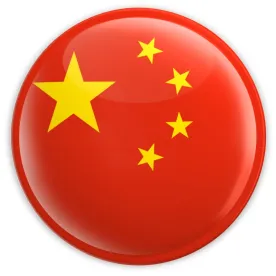The Chinese Ministry of Ecology and Environment (MEE), formerly the Ministry of Environmental Protection (MEP), issued the “Measures on the Environmental Management of New Chemical Substances” (MEE Order No. 12) on April 29, 2020, which will replace the current MEP Order No. 7 on January 1, 2021. To implement MEE Order No. 12, the MEE released the “Guidance for Environmental Management Registration of New Chemical Substances (Draft for Consultation)” (Draft Guidance) on August 17, 2020, to replace the current “Guidance for New Chemical Substances Notification and Registration” in effect under MEP Order No. 7 since October 15, 2010. The deadline to submit comments to MEE regarding the Draft Guidance is September 6, 2020. Comments can be submitted to MEE via e-mail (chem@mee.gov.cn).
As reported in our May 8, 2020, memorandum, “China Publishes Long-Awaited Revised MEP Order No. 7,” MEE Order No. 12 introduced some concepts similar to those under the U.S. Toxic Substances Control Act (TSCA) and put emphasis on the management of new chemical substances with persistent (P), bioaccumulative (B), and toxic (T) potential. The Draft Guidance provides some details about the new chemical substance notification and registration under MEE Order No. 12. The key points in the Draft Guidance are summarized below:
-
The Draft Guidance specifies that active pharmaceutical ingredients and active pesticide ingredients are excluded from the scope of the new chemical substance notification and registration;
-
As in MEE Order No. 12, the Draft Guidance does not include the low volume exclusion for new chemical substances used for research with annual production or import volumes of less than 100 kilograms (kg);
-
The “Repeated Registration” provision under MEP Order No. 7, which enabled a latter notifier to license data from the original notifier and, in essence, share the original notifier’s approved tonnage level, has been removed. It is not clear whether a latter notifier is permitted to license data from the original notifier to file its own registration, and whether any additional data requirements will apply only to the latter notifier if the former notifier makes no changes to its existing registration;
-
The criteria for polymers of low concern (PLC) are modified to add alkoxysilane, amine, spiroenamine, halosilane, hydrazine, α/β lactone, and methacrylic acid/ester as high concern or high activity groups;
-
The Draft Guidance specifies that overseas laboratories used to perform physiochemical properties testing must comply with International Organization for Standardization (ISO) 17025 or Good Laboratory Practices (GLP) and the overseas toxicology and ecotoxicology testing laboratories must be in compliance with GLPs;
-
The Draft Guidance provides criteria for high-hazard substances, which are substances that meet all three criteria for P, B, and T, substances that meet both criteria for very persistent (vP) and very bioaccumulative (vB), substances with other equivalent environmental or health hazards such as endocrine disruptors, substances with a Category 1 classification for acute toxicity, carcinogenesis, mutagenesis, reproductive toxicity, or specific target organ toxicity -- repeat exposure (STOT-RE), and substances with a no observed effect concentration (NOEC) or effective concentration at ten percent inhibition (i.e., EC10)
-
Based on the Draft Guidance, the five-year protection period for confidential information on the identity of new chemical substances could be extended if the substance does not have any environmental or health hazard classification;
-
The data requirements for simplified and regular registrations are classified into two categories based on the substance’s P and B potential. Substances with either P or B potential will require extensive toxicology and ecotoxicology tests, including a chronic toxicity test in rodents and a sediment-water chironomid toxicity test;
-
Three genotoxicity tests, including an in vivo genotoxicity test, must be conducted for regular registration regardless of the test results of the in vitrogenotoxicity tests;
-
The biodegradability, acute and chronic fish toxicity, activated sludge respiration inhibition, and bioaccumulation tests must be performed in China if required;
-
The significant new use registration is considered as a regular registration with the same procedure and data requirements as regular registration; and
-
In addition to risk assessment, socioeconomic benefit assessment is required for high-hazard substances.
In addition, the Draft Guidance includes an application procedure for companies to add chemical substances that were manufactured, imported, sold, or used in China before October 15, 2003, to the Inventory of Existing Chemical Substances in China (IECSC).
Commentary
The Draft Guidance provides some details on data requirements, notification, and registration procedures for new chemical substance registration under MEE Order No. 12 in China. Although MEE Order No. 12 introduces some concepts similar to those under U.S. TSCA, the Draft Guidance indicates that the lengthy checklist of data requirements for new chemical substance registration is still hazard-oriented and test-based, not risk-based, and that alternatives to test data for the substance such as quantitative structure-activity relationship (QSAR) and read-across are only accepted as supplemental information, unless the test is technically infeasible. Compared to the current MEP Order No. 7, a substance with either P or B potential will require more tests than the current registration of a substance for annual volumes of 10 to 1,000 tons, although some burdens and data requirements will be reduced for registration of new chemical substances without P or B potential. Some clarification will be required such as authorized reuses of the test data submitted by the original notifier. The release of the Draft Guidance in final is expected before the end of this year.


 />i
/>i
